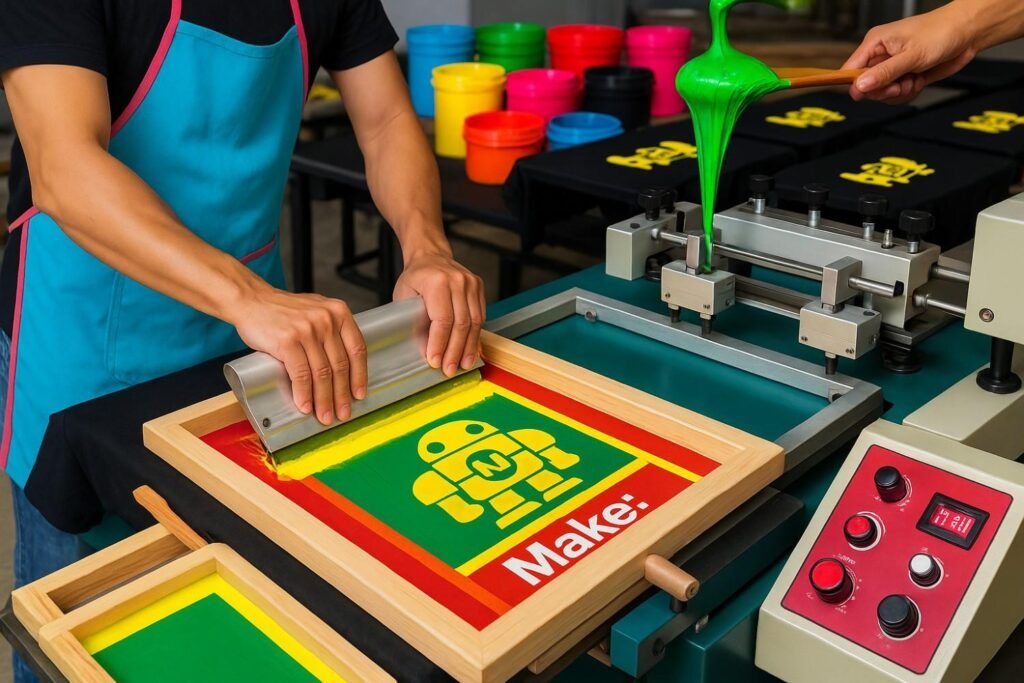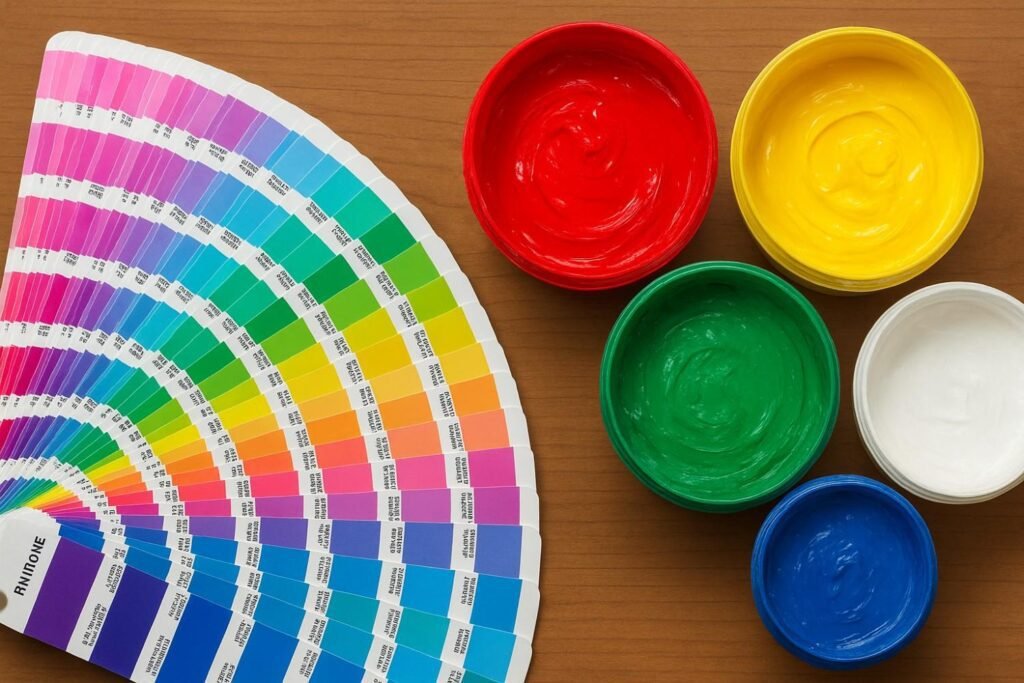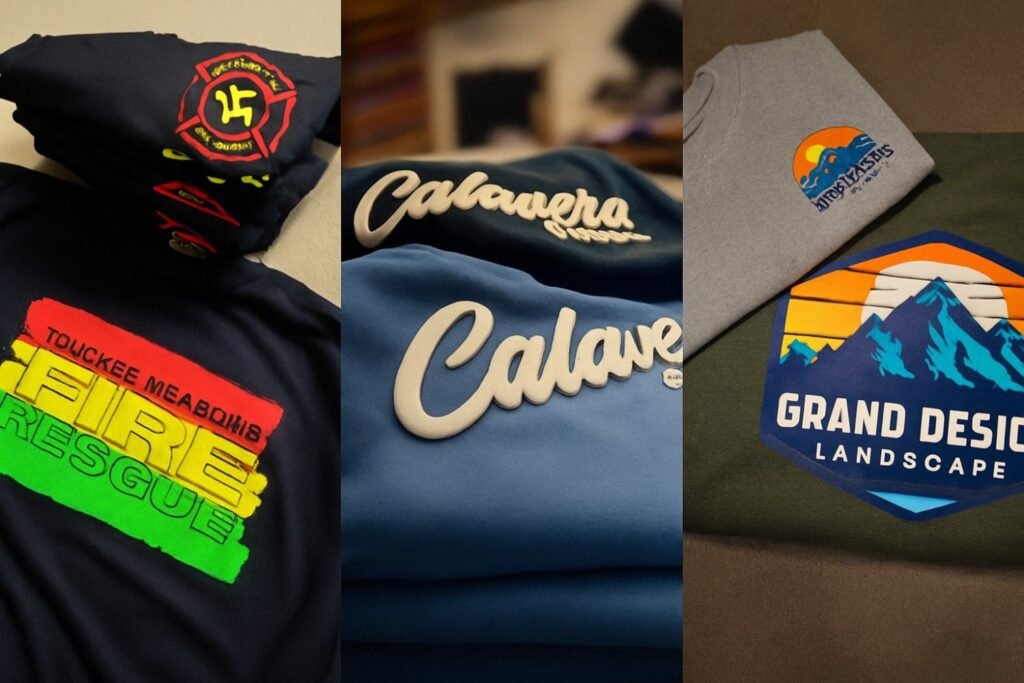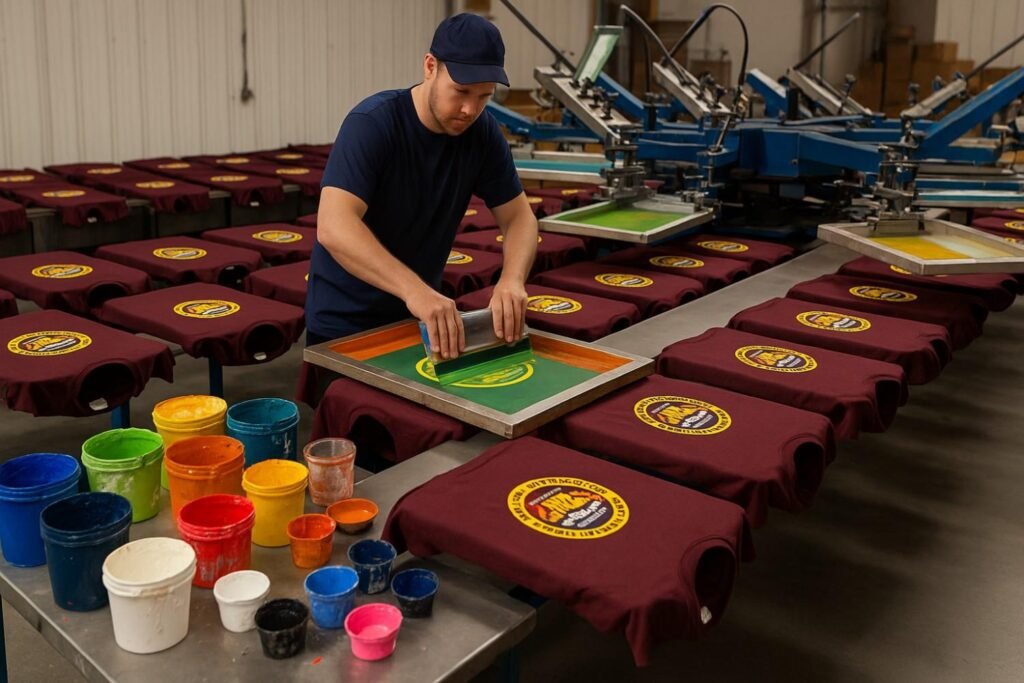When I first learned the method of screen printing, I was amazed at how ink is carefully pressed through a mesh screen onto fabric to create a design. It’s not just about transferring artwork; it’s about making something vibrant, bold, and full of life. What makes this craft truly distinguished is its prowess in producing precise yet uncomplicated styles that stand out at any scale. From t-shirts, hoodies, hats, and bags to other apparel, this process excels at delivering vivid, enduring prints that feel both artistic and professional. Personally, I’ve always loved how the rich, opaque layers of ink give every piece a strong finish that lasts.

At GAMBITMFG, we’ve worked on projects that highlight the adaptability of screen printing—whether it’s for flat or contoured surfaces, across a diverse spectrum of commercial or creative endeavors. I’ve seen firsthand how a logo looks perfect when the Pantone shades are carefully matched. Our on-brand approach ensures every detail feels intentional, and with our wide selection of colors, matching a brand’s vision becomes seamless. Screen printing lets us bring designs to life today with durability and flair, offering endless possibilities for those who value both style and consistency.
Why Choose Screen Printing?
I’ve always admired how screen printing makes bold designs stand out with striking colors and crisp details. Unlike embroidery, where the width of a pattern limits creativity, a printed piece can be much larger and more flexible. For intricate effects like gradients, or when you need something perfect for large-scale projects, screen printing is a great choice. In my own work, I’ve noticed how it becomes especially cost-effective for long runs, handling high volume garments without losing sharpness or consistency.
Beyond its practicality, the process can also achieve a soft feel and smooth, lightweight finish, especially when water-based inks are in play. I’ve had excellent results when working with Real Thread, who use techniques that bring out that subtle yet professional touch—especially valuable when you want prints that both look and feel premium. This balance of durability, scale, and tactile quality is what makes screen printing one of my go-to methods for reliable and standout apparel.
When to Choose Screen Printing
From my experience, screen printing is the way to go when your design is colorful, complex, or intended for casual wear. It’s often the first choice for vibrant branding that really pops on t-shirts, tanks, and hoodies. For bulk orders, it proves highly cost-effective, making it ideal for events, giveaways, or merch drops. This method truly thrives in simplicity, handling both large projects and straightforward ideas with ease.
Of course, there are times when intricate, multi-colored small runs may be more efficient with digital alternatives, but screen printing nevertheless remains the top solution for projects that are demanding, require top-tier quality, and promise longevity. If you’re unsure which custom route is right, you can always reach out to our team of experts for personalized guidance. We’ll provide tailored insights for your needs, help you check the price factors, and even compare different methods so you can make the best decision today.

Ink Styles for Any Garment
When it comes to choosing the right print for your garment, there are many inks available to fit your design. At our shop, we mainly work with plastisol, water-based, and discharge options, though specialty types like metallic, puff, or reflective can also be used to achieve the desired look. If your work calls for something specific, we encourage you to please contact us for pricing so we can help you bring your vision to life.
Plastisol Ink
The most common and widely used ink style, plastisol is known for being versatile, durable, and thick, making it a strong choice for many artwork types. Because pricing is often based on the number of colours in the design, it’s an efficient option for clear graphic detail that provides long-lasting results.
Water-based & Discharge Ink
If you want a softer look that feels vintage and worn, water-based and discharge inks are the way to go. Since the pigment is absorbed into the fabric and carried by a solvent base, the colours appear more muted, making them mostly used when a retro or desired faded style is preferred.
4-Colour Process
For artwork that requires a wide range of tones, the 4-colour process is a popular choice. This design method uses four players—cyan, magenta, yellow, and keyline (black)—also known as CMYK. The image is separated into different colours, each printed on its own plate per layer, to create different effects. It’s a flexible technique when you want to use full-color printing and achieve a professional finish.
Price Considerations
Every price for screen printing depends on a mix of considerations such as the garment type, quantity ordered, locations printed, colors in the design, and the in-hands date. Factors like setup, the print option chosen, or whether you go for an inexpensive, mid, or high range will affect costs. With so many styles to choose from, including t-shirts or any other product, the process becomes a balance of budget and goals. I’ve found that orders with multiple runs, imprints, or tones require more time and preparation, but often have a cheaper solution when the order points hit bulk breaks.
Timing also plays a role. Orders must be produced on demand and ready by the due date, so placement a few weeks in advance usually keeps costs lower. If you need garments in just a few days, it can get more expensive. Whether it’s a front or back print, each detail is required and can shift pricing. Having worked on projects with both small and large runs, I’ve seen how choosing the right mix of options helps customers pass their goals while keeping everything on budget.
Type of Garment
The product type matters a lot. With t-shirts and other apparel, you can pick from inexpensive, mid-range, or high-end options. There are many styles to choose, and it’s not limited to just one kind of garment—you can customize almost every piece.
Quantity Ordered
The setup involved in screen printing makes larger orders more efficient. The more shirts you request, the lower the price becomes as you pass break points, reducing costs due to scale.
Number of Locations Printed
Each location requires a separate setup and runs for your imprint. A front print only will always be cheaper than a front and back design, and each new placement increases costs.
Number of Colors on Each Design
The colors in a design directly affect the run time and setup per location. A one-color print is far less expensive than a three-color version. When there’s a lot of tones, using a process solution can be a cheaper choice. The number of colors is a key pricing factor.
In-Hands Date
Orders are produced on demand by your due date. Garments needed in a few days from placement are usually more expensive than those planned weeks ahead. Having needed items ready in weeks instead of last minute makes a few big differences in cost.
Types of Screen Printing We Offer
Screen printing today uses state-of-the-art digital equipment along with industry expertise to design and produce screen-printed T-shirts that represent your brand. The use of modern methods makes each project more accurate and consistent, giving you reliable results every time.
Spot Color Screen Printing
Think of this as the MVP of personalized T-shirt printing. This process relies on the stock ink color, creating vibrant, solid spots of shade across designs. If you require specific, consistent tones across prints, this method makes your business logo or shirt really pop. I often try this option when creating simple graphics that need to stand out with clarity and brightness.
Simulated Process Printing
The simulated process of screen printing can reproduce full-color images with a limited number of ink colors. Unlike CMYK where four layers (cyan, magenta, yellow, and black) build the range, this method utilizes carefully selected spot colors to achieve a similar effect. When done carefully, the results feel almost photographic while still being cost-friendly.

Halftone Printing
Halftone printing uses tiny dots of varying sizes to create the illusion of a full spectrum of shades with fewer inks. This technique adds a gradient effect and extra depth, especially for custom prints with complicated designs. It works well for limited color palettes, where a few clever tricks still achieve striking results in screen printing.
Puff Screen Printing
With puff screen printing, a simple flat design is transformed into a raised textural work of art. It calls attention to itself, adds visual appeal, and becomes memorable. I’ve seen puff prints become customer favorites because they stand out in both look and feel.
Screen Printing: Pros and Cons
Screen-printing is a widely used method for creating custom designs on clothing, offering several strong benefits. It is cost-effective for large runs because setup costs spread across multiple items, making it perfect for bulk orders. The ability to produce vibrant colors, bold graphics, and long-lasting durability (as the ink bonds well with fabric) makes it a great option.
That said, there are limits. Complex designs with intricate or fine details can be hard to execute, and color limitations mean each shade needs its own screen—which raises costs. For small orders, the same setup costs make it less cost-effective compared to other methods. Knowing these trade-offs helps businesses make smarter choices.
Reasons Why Small Businesses Love Custom Screen Printing
For many small businesses, making a strong first impression is essential, and custom screen printing offers a fun, creative approach to branding that doesn’t require deep pockets. Employees in matching shirts or customers with tote bags carrying your logo help build visibility and a sense of community. These items often become conversation starters, naturally connecting you with potential customers.
The appeal is both practical and emotional. Custom prints are a significant opportunity to establish a brand without high costs. Ordering in bulk lowers the price per piece, making it a viable option for many budgets. Beyond saving money, T-shirts work like walking billboards, offering free advertising. Plus, providing uniforms boosts team morale and makes employees feel part of a cohesive unit—a benefit that shows outwardly to clients and customers.

Cost-Effectiveness for Small Businesses
Operating on tight budgets means every dollar must count. Custom screen printing is budget-friendly, often more economical than traditional advertising. Unlike expensive ads with short-lived exposure, high-quality printed apparel keeps your brand visible without ongoing spending.
Economies of Scale
Here’s where economies of scale shine: the more you order, the lower the prices per unit. Bulk discounts let you invest in bigger quantities to amplify your presence. I’ve seen businesses save money while strengthening their reach this way. Longevity is also key—high-quality prints are built to last, meaning fewer replacements each season. Add in dual-use benefits (like uniforms doubling as promotional giveaways), and you maximize both reach and value.
Durable and High-Quality Merchandise
Quality and longevity aren’t just buzzwords; they are essential to branding. A T-shirt with a logo that fades after a few washes leaves a poor impression. Using durable materials ensures every piece has visual appeal and reinforces a company’s reputation. I’ve found that when businesses prioritize this, their merchandise not only lasts but also leaves customers with confidence in the brand.
Frequently Asked Questions (FAQ)
How long does screen printing last?
Screen printing is highly durable. Prints won’t fade or peel and will hold up wash after wash.
What’s the minimum order size?
We require a minimum of 12 pieces for screen printing orders.
Can you match my brand colors?
Yes! We can print up to 7 spot colors and match Pantone® shades as needed.
Do you color-match to Pantone?
Absolutely. Provide your Pantone Solid Coated values, and we’ll mix inks to match them for consistent branding.
How is pricing calculated?
Pricing depends on the garment type, number of print locations, number of ink colors, and total order quantity. Larger runs reduce the cost per piece.
What are the advantages of water-based printing?
Water-based prints feel soft because the ink bonds with the fabric itself. The result is a breathable, retail-quality finish with a slightly muted, vintage vibe—perfect for brands wanting a premium look.
What are the disadvantages of water-based printing?
Water-based ink works best on 100% cotton fabrics. It’s not ideal for polyester or rayon blends, and colors may appear more subdued compared to plastisol ink.
What garments work best with water-based printing?
We recommend high-quality cotton t-shirts and sweatshirts. Popular choices include AS Colour, American Apparel, Bella+Canvas, Independent Trading, and Hanes Ultimate Cotton.
